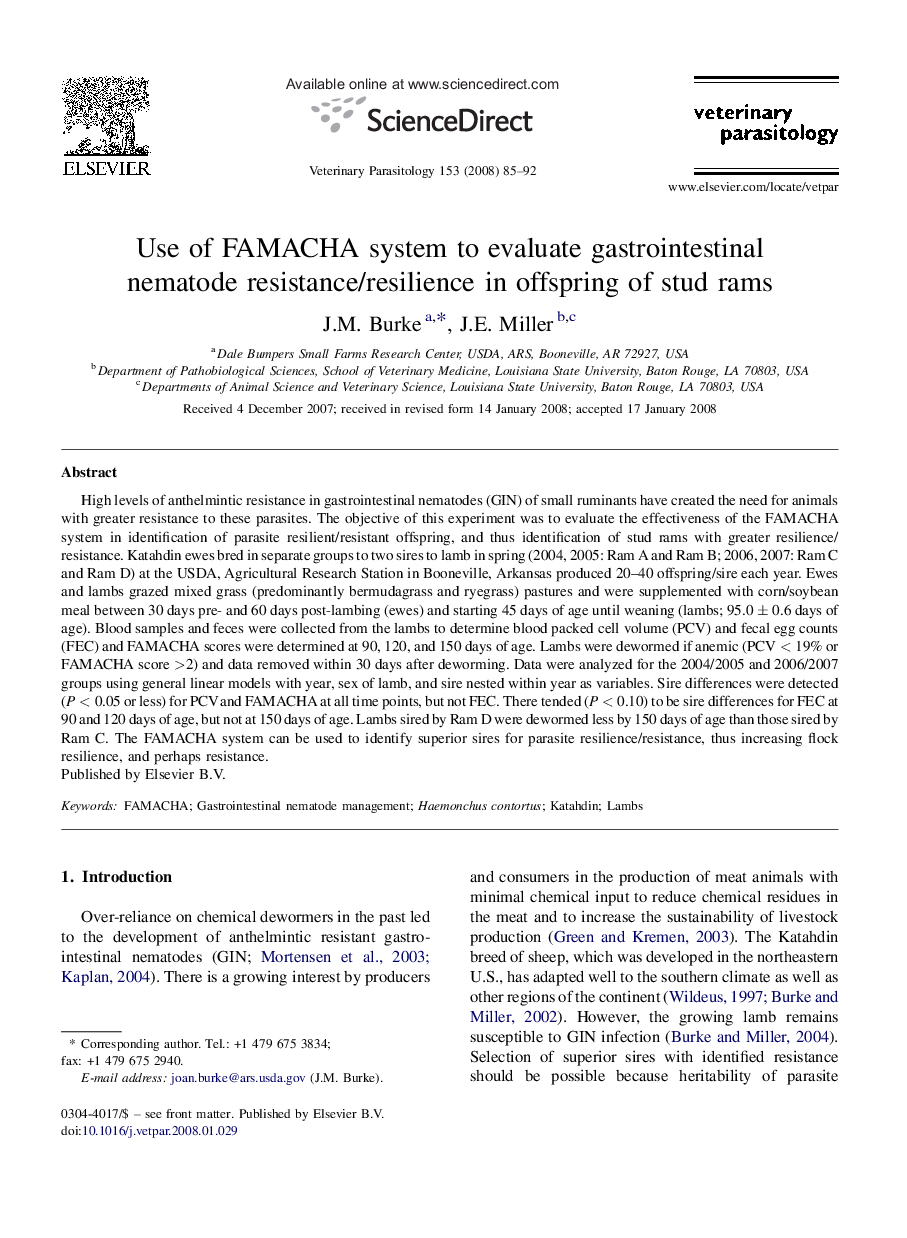| Article ID | Journal | Published Year | Pages | File Type |
|---|---|---|---|---|
| 2471609 | Veterinary Parasitology | 2008 | 8 Pages |
High levels of anthelmintic resistance in gastrointestinal nematodes (GIN) of small ruminants have created the need for animals with greater resistance to these parasites. The objective of this experiment was to evaluate the effectiveness of the FAMACHA system in identification of parasite resilient/resistant offspring, and thus identification of stud rams with greater resilience/resistance. Katahdin ewes bred in separate groups to two sires to lamb in spring (2004, 2005: Ram A and Ram B; 2006, 2007: Ram C and Ram D) at the USDA, Agricultural Research Station in Booneville, Arkansas produced 20–40 offspring/sire each year. Ewes and lambs grazed mixed grass (predominantly bermudagrass and ryegrass) pastures and were supplemented with corn/soybean meal between 30 days pre- and 60 days post-lambing (ewes) and starting 45 days of age until weaning (lambs; 95.0 ± 0.6 days of age). Blood samples and feces were collected from the lambs to determine blood packed cell volume (PCV) and fecal egg counts (FEC) and FAMACHA scores were determined at 90, 120, and 150 days of age. Lambs were dewormed if anemic (PCV < 19% or FAMACHA score >2) and data removed within 30 days after deworming. Data were analyzed for the 2004/2005 and 2006/2007 groups using general linear models with year, sex of lamb, and sire nested within year as variables. Sire differences were detected (P < 0.05 or less) for PCV and FAMACHA at all time points, but not FEC. There tended (P < 0.10) to be sire differences for FEC at 90 and 120 days of age, but not at 150 days of age. Lambs sired by Ram D were dewormed less by 150 days of age than those sired by Ram C. The FAMACHA system can be used to identify superior sires for parasite resilience/resistance, thus increasing flock resilience, and perhaps resistance.
